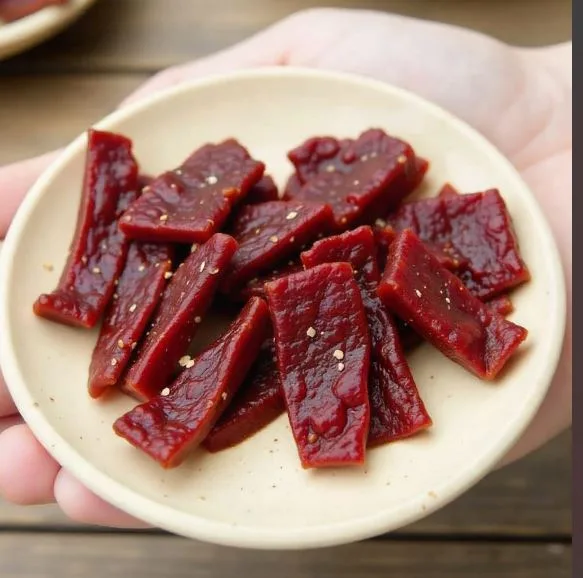The ultimate guide to biltong vs jerky: Taste, health & heritage
For lovers of dried, cured meat, the world offers two incredible options: biltong and jerky. While they might appear similar at first glance – both are protein-packed, chewy, and perfect for a road trip or a long day on the tools – the reality is that they are cousins, not twins. They originate from different traditions, use different preparation methods, and deliver vastly different experiences for your tastebuds.
If you’ve ever stood in front of the snack aisle, tossing up which one to grab, you’ve probably pondered the great debate: biltong versus jerky. Understanding the subtle yet significant differences between the two will not only help you choose your favourite, but also deepen your appreciation for the culinary heritage behind these mighty snacks. Let’s dive into the core differences, from curing techniques to flavour profiles.
The heritage and preparation methods
The fundamental distinction between these two meat snacks lies in how they are prepared and cured. This process dictates the final texture, flavour, and moisture level of the finished product. When we talk about biltong versus jerky, we are really talking about two distinct preservation philosophies.
What is jerky?
Jerky is typically a product of the Americas, where it was traditionally prepared by cutting lean meat into thin strips and drying it over fire or in the sun. Modern jerky production involves slicing the meat (usually beef) thinly, marinating it extensively in ingredients like soy sauce, Worcestershire sauce, and sugar, and then dehydrating or smoking it with heat.
The key features of jerky preparation are:
- It is cooked or dehydrated using heat.
- It is heavily marinated before drying, resulting in strong external flavouring.
- The meat is cut thinly, often across the grain.
What is biltong?
Biltong, on the other hand, comes from a Southern African tradition. Its origins trace back to the necessity of preserving meat without refrigeration. The process is markedly different from jerky, relying heavily on a deep cure rather than heat drying.
The preparation for biltong involves cutting the meat (often thicker strips or steaks) along the grain, curing it in a mixture of vinegar, salt, and spices-most notably coriander, pepper, and cloves. Crucially, the meat is then air-dried, often for several days, without the application of heat. It’s a slow-cured process that gives the meat its distinct richness, especially when you enjoy a high-quality slice of traditional biltong.
The flavour profile showdown
If you’ve tasted both, you’ll immediately realise that the preparation methods result in vastly different experiences. The comparison of biltong vs jerky in terms of flavour is where personal preference truly comes into play.
Texture and chewability
Jerky, due to its thin slicing and heat-based dehydration, is often dry, brittle, and consistently chewy. It requires a sustained chewing effort, which some people absolutely favour. The texture is uniform and rugged.
Biltong, because it is air-dried and often cut into thicker pieces, retains more moisture and fat. This results in a softer, more tender product. Depending on the cut and drying time, biltong can range from slightly chewy to almost melt-in-your-mouth tender. Furthermore, biltong is often sliced into chunks or flakes after drying, allowing for greater textural variety in a single batch.
Key ingredients and spices
The spice profile is perhaps the most defining characteristic when considering biltong vs jerky. Jerky tends to be sweet, smoky, and salty, with the marinade overpowering the natural flavour of the beef. It frequently features chilli, barbecue, or teriyaki notes.
Biltong relies on the tang of vinegar and the earthy, aromatic blend of whole coriander seeds, pepper, and salt. This combination enhances the natural beef flavour rather than masking it, offering a deeper, more savoury complexity. It feels less processed and more purely carnivorous. Consequently, when comparing the complex profiles of biltong versus jerky, biltong often wins on depth of flavour.
Nutritional comparison: Which snack is healthier?
Both are excellent sources of lean protein, making them popular with fitness enthusiasts and those looking for a healthier alternative to potato chips. However, the preparation differences mean there are slight nutritional variations when examining biltong versus jerky.
Biltong often contains less sugar than commercial jerky, as the curing process doesn’t rely on sweet marinades for flavour. Furthermore, because it often uses vinegar and air-drying, biltong can retain more of the naturally occurring B vitamins and minerals than jerky that is subjected to high heat.
When you are trying to minimise your carbohydrate or sugar intake, biltong is often the preferred choice. Ultimately, both snacks offer:
- High protein content, excellent for satiety.
- Low carbohydrate levels.
- A long shelf life, making them great pantry staples.
Choosing your champion: When to reach for each
There is no right or wrong answer in the great biltong vs jerky debate; it simply comes down to what you are craving. Do you want something sweet and smoky, or tangy and savoury? The choice between biltong versus jerky depends entirely on the occasion and your palate.
Reach for jerky when you want a strong, intensely flavoured snack that provides a good workout for your jaw. It’s perfect if you enjoy a barbecue flavour profile or something heavily spiced with chilli.
Choose biltong when you prefer a more tender chew and a richer, meatier taste where the vinegar and spices complement the beef rather than dominating it. Many people find the unique texture of biltong more satisfying. Moreover, if you’re looking for a snack with less sugar, the inherent differences in biltong vs jerky preparation often make biltong the low-sugar champion.
Whether you’re a purist who loves the classic spices or someone who enjoys experimenting with different flavour combinations, appreciating the heritage behind both snacks only enhances the experience. The conversation around biltong vs jerky is ongoing, but one thing is certain: both are brilliant ways to enjoy cured meat.
Frequently asked questions
Is biltong safer than jerky to eat?
Both biltong and jerky are completely safe to consume if prepared and stored correctly. Jerky relies on high heat and low moisture to kill bacteria, while biltong relies on the curing process (salt and vinegar) and air-drying to inhibit microbial growth. Both methods are effective preservation techniques.
Does biltong taste like jerky?
No, they taste quite different. Jerky is typically smoky, sweet, and heavily marinated. Biltong is savoury, tangy (due to the vinegar cure), and usually spiced with coriander and pepper, offering a much richer, earthier beef flavour.
Why is biltong often more expensive than jerky?
Biltong is often more expensive because the preparation process is usually less industrialised and takes longer. The air-drying process requires careful monitoring, and the meat is often cut thicker, meaning more raw product is used per slice compared to thinly sliced jerky.
Can biltong be made from other meats besides beef?
Yes. While beef is the most common meat used, biltong can also be made from game meats like venison, kudu, or even ostrich. Jerky is also often made from turkey, pork, or game.
How should I store biltong and jerky?
Commercially packaged biltong and jerky are shelf-stable and can be stored at room temperature in their sealed packaging. Once opened, they should be kept in an airtight container in a cool, dry place. Biltong, due to its slightly higher moisture content, may benefit from refrigeration if you plan to keep it for an extended period after opening.






